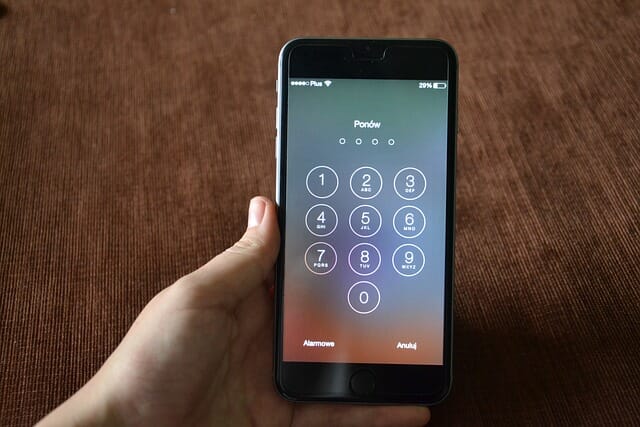
Understanding Caller ID vs Reverse Lookups
Introduction
In an era where communication happens at lightning speed, understanding the nuances of caller identification and reverse lookups has become essential. Many people often find themselves receiving calls from unknown numbers, leaving them puzzled about who is on the other end of the line. Thankfully, technologies like Caller ID and Reverse Cell Phone Lookup have emerged to help us navigate these uncertainties. In this detailed article, we will explore the differences between Caller ID and reverse lookups, their functionalities, and how they can be used effectively to enhance our communication experience.
Understanding Caller ID vs Reverse Lookups
What is Caller ID?
Caller ID is a service that displays the phone number of an incoming call. It allows you to see who is calling before you answer the phone, enhancing your ability to make informed decisions about whether or not to pick up. This technology can also show the name associated with the number if it’s available in the caller's network.
How Does Caller ID Work?
Caller ID works by sending a specific signal along with the call that transmits the caller's phone number and sometimes their name when a connection is established. This information is transmitted through telecommunication networks, allowing your device to display it on-screen.
Benefits of Using Caller ID
What are Reverse Lookups?
A reverse lookup service lets you enter a phone number to find information about its owner. Unlike Caller ID, which only tells you who’s calling when they ring you up, reverse lookups provide details even if you haven’t received a call from that number.
How Does Reverse Lookup Work?
Reverse mobile lookup services access extensive databases that contain information about phone numbers. When you input a number into these services, they search for records associated with it—like names and addresses—to deliver relevant results.
Benefits of Using Reverse Lookups
The Key Differences Between Caller ID and Reverse Lookups
Functionality Comparison
While both technologies aim to provide clarity regarding phone numbers, they serve different purposes:
- Caller ID displays information during an incoming call.
- Reverse Lookups offer details based on a number you've already encountered.
Real-Time vs Database Search
- With Caller ID, you're receiving real-time data as calls come in.
- Reverse lookups rely on existing databases and may take longer depending on data availability.
Use Cases
- Use Caller ID for immediate decision-making during calls.
- Use reverse mobile lookup when trying to figure out who called after you've missed a call.
When Should You Use Each?
Best Practices for Using Caller ID
Best Practices for Using Reverse Lookups
The Technology Behind These Services
How Telecommunication Networks Support Caller ID
Telecommunication companies employ various protocols (like SS7) that facilitate the transmission of caller information across networks seamlessly.
The Data Aggregation Process for Reverse Lookups
Reverse lookup services compile data from public records, Phone number database social media profiles, and other databases to create comprehensive reports on phone numbers.
Limitations of Each Service
Limitations of Caller ID
Limitations of Reverse Lookups
Legal Considerations
Is It Legal to Use Reverse Lookup Services?
VOIP number lookupYes! As long as you're using reputable services that comply with privacy laws in your region, employing reverse lookups is legal and ethical.
Privacy Concerns Regarding Caller Information
Caller privacy remains paramount; always ensure you're not infringing on someone's rights when attempting to uncover their identity via reverse lookups or other means.
Common Myths About Caller ID and Reverse Lookups
Myth 1: All Numbers Can Be Traced Easily
While many numbers can be identified through reverse mobile lookup services, some may remain untraceable due to Phone owner identification privacy settings or lack of available data.
Myth 2: Caller ID Always Shows Accurate Information
Not necessarily! Spoofing technology allows fraudsters to disguise their true identity by manipulating what appears on your caller ID screen.
FAQs
Q1: Can I trust all reverse lookup services? A: Not all services are created equal; choose reputable sites known for accuracy and user privacy protection.
Q2: Does using caller ID cost extra? A: Most carriers include caller ID features in standard plans; however, check with your provider for specifics.

Q3: Can I trace cell phone numbers overseas? A: Yes! However, international regulations might apply depending on local laws concerning privacy and telecommunications data sharing.
Q4: Are there any free options for reverse lookups? A: While many sites offer limited free searches, comprehensive results usually require payment or subscription fees.
Q5: Will my personal info be shared when using these services? A: Reputable services prioritize user privacy; however, always read terms carefully before providing any personal details!
Q6: What should I do if I suspect spam calls despite seeing them on my caller ID? A: Trust your instincts! If it feels off—especially if it’s asking for sensitive info—let it go to voicemail!
Conclusion
In conclusion, understanding Caller ID versus reverse lookups equips you with valuable tools in today’s communication landscape. While both serve unique purposes—allowing you to identify callers during incoming calls or find out who owns an unknown number—they collectively enhance your ability to manage communication efficiently and safely in our increasingly connected world. Whether you're trying to dodge spam or simply want clarity around unfamiliar calls, embracing these technologies will undoubtedly elevate your telephone experience!
As we move further into this digital age filled with smartphones and technological advancements, staying informed about such tools will empower us all—making our interactions more secure while keeping our personal boundaries intact! So next time you receive an unknown call or want more information about someone’s contact details—remember what you've learned here today!
With every bit of knowledge gained about Understanding Caller ID vs Reverse Lookups, you'll feel more confident navigating those uncertain communications encounters ahead!